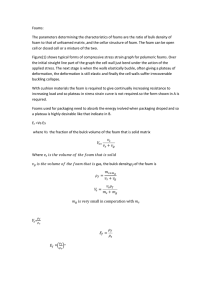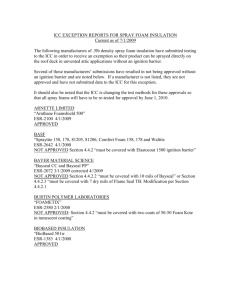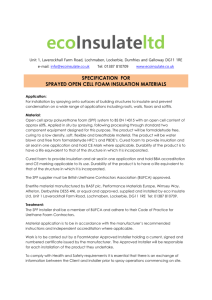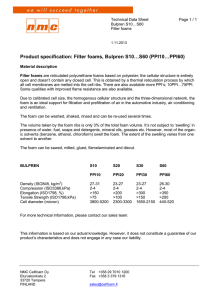Top 10 Questions Asked About Spray Foam Insulation
advertisement
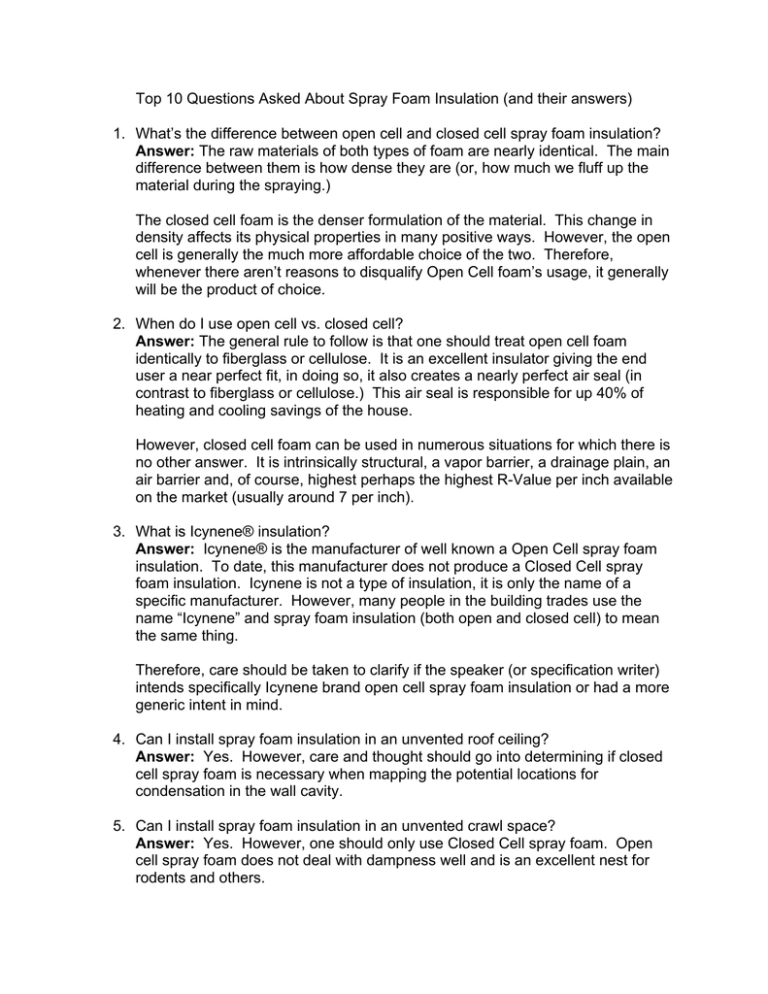
Top 10 Questions Asked About Spray Foam Insulation (and their answers) 1. What’s the difference between open cell and closed cell spray foam insulation? Answer: The raw materials of both types of foam are nearly identical. The main difference between them is how dense they are (or, how much we fluff up the material during the spraying.) The closed cell foam is the denser formulation of the material. This change in density affects its physical properties in many positive ways. However, the open cell is generally the much more affordable choice of the two. Therefore, whenever there aren’t reasons to disqualify Open Cell foam’s usage, it generally will be the product of choice. 2. When do I use open cell vs. closed cell? Answer: The general rule to follow is that one should treat open cell foam identically to fiberglass or cellulose. It is an excellent insulator giving the end user a near perfect fit, in doing so, it also creates a nearly perfect air seal (in contrast to fiberglass or cellulose.) This air seal is responsible for up 40% of heating and cooling savings of the house. However, closed cell foam can be used in numerous situations for which there is no other answer. It is intrinsically structural, a vapor barrier, a drainage plain, an air barrier and, of course, highest perhaps the highest R-Value per inch available on the market (usually around 7 per inch). 3. What is Icynene® insulation? Answer: Icynene® is the manufacturer of well known a Open Cell spray foam insulation. To date, this manufacturer does not produce a Closed Cell spray foam insulation. Icynene is not a type of insulation, it is only the name of a specific manufacturer. However, many people in the building trades use the name “Icynene” and spray foam insulation (both open and closed cell) to mean the same thing. Therefore, care should be taken to clarify if the speaker (or specification writer) intends specifically Icynene brand open cell spray foam insulation or had a more generic intent in mind. 4. Can I install spray foam insulation in an unvented roof ceiling? Answer: Yes. However, care and thought should go into determining if closed cell spray foam is necessary when mapping the potential locations for condensation in the wall cavity. 5. Can I install spray foam insulation in an unvented crawl space? Answer: Yes. However, one should only use Closed Cell spray foam. Open cell spray foam does not deal with dampness well and is an excellent nest for rodents and others. 6. Can I install inject foam insulation into existing cavity walls or other inaccessible spaces? Answer: Yes. Both open cell and closed cell foam is available for injection into inaccessible spaces. The material is injected as a liquid and then rises to completely fill and insulate the void. Injection foam is a tool that few builders know about and can be a cost effective solution to numerous retrofit problems. 7. Is the spray foam insulation flammable? Answer: Yes. According to the International Building Code, all Foam Plastic Materials (not just spray foam, but Styrofoam, sound proofing foams, extruded polystyrene, foam boards, etc.) must be considered flammable (no matter what any salesman tries to tell you.) Different manufacturers’ foams have different flammability. Currently, there are a number of foams that perform over and above the standards required by the International Building Code. However, the literature of each manufacturer’s foam should be reviewed before a project commences. 8. Can I install spray foam insulation directly to masonry? Answer: Yes. Only Closed Cell Spray foam may be used directly to masonry. (Open cell foam will get and stay wet soon after installation.) A primer is generally not necessary. However, a dew point/wall condensation analysis should be completed to insure that moisture within the masonry does not free within the masonry itself and cause an untimely degradation of the wall. Although this is a theoretical possibility, we have never witnessed it on any of our projects. 9. Can I leave spray foam insulation directly exposed to the sun? Answer: Yes, with limitations. Spray foam left directly exposed to the sun and weather will begin to seriously degradate after about 1 year. However, after a few days, the foam will change colors and begin to yellow. 10. Is spray foam insulation waterproof? Answer: Some spray foam insulations are waterproof. This depends on the density of the foam. However, open cell foams are definitely not waterproof or water resistant. Rather, open cell foams can hold a tremendous volume of water. Lower density closed cell foams are water resistant, but not completely water proof. However, higher density closed cell foams can be water proof. Check with your installer or the foam manufacturer for more details. Benjamin Marshall, LEED AP, is the Principal of Green Stamp Insulation. Mr. Marshall attended Columbia University and Boston College where he studied and completed his undergraduate and graduate coursework in Environmental and Physical Chemistry. Mr. Marshall is a LEED Accredited Professional and also a licensed General Contractor in Massachusetts and Florida.

